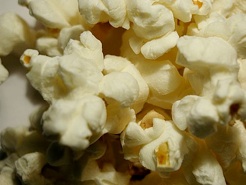Integrative Nutrition Care
Don’t drink your calories.
Drinking sweetened soda/tea/coffee, fruit juice, energy drinks, sports drinks, and alcohol does not satisfy your hunger and merely adds calories. Do you know that a 20 ounce cola soda contains approximately 16 teaspoons of sugar and 240 to 250 calories (depending upon the brand)? If you are currently maintaining your weight, eliminating this one cola per day, without doing anything else, can result in a weight loss of 25 pounds in 1 year. Drink water or low calorie beverages like coffee, with non-fat milk in place of cream, tea with lemon juice, or sparkling water.
Drink at least 6 to 8 glasses of water each day.
When you are dehydrated, you have less energy, a slower metabolism, and can actually think you are hungry when it’s really water that you need. If your urine is dark-colored or cloudy, you are not getting enough fluids.
Eat breakfast.
Eating breakfast prevents you from being ravenous and overeating at the next meal or snack. It also breaks your long overnight fast, which may help jump-start your metabolism.
Choose lower calorie, nutrient-dense foods.
Foods with more water, like vegetables and fruits, are more filling. A serving of 15 potato chips contains 160 calories. For 160 calories, you could eat 40 baby carrots or 2 cups of blueberries or 5 cups of air-popped popcorn or 22.5 cups of spinach! Which snack would make you feel fuller?
Choose a smaller plate.
A recent study showed that a larger plate results in a 9 to 13% increase in food consumption. In planning meals, consider using the plate method to portion your foods. Make half the plate fruit and vegetable, one-quarter lean protein, and one-quarter a whole grain carbohydrate or starchy vegetable. If dairy is desired, switch to non-fat or low-fat dairy. For more information on the plate method, and some helpful weight loss tips, visit the USDA Choose My Plate at: www.choosemyplate.gov/weight-management-calories/weight-management.html.
Choose high fiber carbohydrates.
Fiber slows digestion and makes you feel full longer. You will be more satisfied after eating a sandwich on whole wheat or other high fiber bread rather than white bread, and also be less likely to crave sweets after the meal. Fiber also helps with blood cholesterol and after meal blood glucose values. An example of a low fiber, high fat meal that will leave you hungry is a 2 ounce croissant with 4 ounces of chicken salad (contains mayonnaise), plus a 12 ounce sweetened iced tea, which equals a total of 576 calories. A better choice, which is not only healthier for you, but will make you feel more satisfied, and save you calories is a 3 ounce turkey breast sandwich with lettuce, tomato, and mustard on 2 slices of 100% whole wheat toast, a 1 1/2 cup tossed vegetable salad with 1 ounce of reduced fat salad dressing, 1 cup of strawberries, and as much water or sugar-free beverage as you desire. This meal equals 394 calories, a savings of 182 calories. If you made this type of change every day at lunch, it would equate to a weight loss of 19 pounds in one year.
Plan your meals in advance and try to cook meals at home more often.
Bringing a shopping list to the store makes it less likely that you will add unhealthy food items. Planning also makes it less likely that you will grab some convenience food when you’re hungry. And meals you prepare at home can limit sugar, sodium, fat, portion size, and calories, be more nutritious, and save you money.
Keep a food diary.
Writing down what you eat and drink helps you to make better choices in the future, shows you exactly how much you’ve eaten, and helps to point out your problem areas so that you can do better the next day.
Eat slowly.
This will give your brain a chance to realize that you are full.
Cut back on foods which are high in fat or sugar.
The calories in those cakes, pastries, cookies, candy, ice cream, chips, sausages, hot dogs, and deep-fat fried items add up. Do you know that eliminating that 260 calorie glazed donut each morning will save you 94,640 calories in a year, which equals 27 pounds of weight loss? Instead, choose a whole grain cereal with non-fat milk for breakfast; lean cuts of meat with the fat trimmed off; use non-fat broth for cooking in place of oil; try raw vegetables with a non-fat yogurt dip or salsa in place of chips and dip; use fruit for dessert or make something at home that contains less sugar and fat. [You can replace up to half the fat in a recipe with unsweetened applesauce. As an example, if a recipe calls for 1 cup of oil (1,940 calories), replacing half the oil with unsweetened applesauce (one-half cup is 53 calories) saves 917 calories from the recipe, and the dessert will still taste moist and delicious].
Increase your activity.
People that successfully lose weight attribute it partially due to exercise. Walking is one of the easiest ways to increase your physical activity. Active things you enjoy like gardening, swimming, biking, golfing, playing tennis, etc. are other ways. Park further away at the store; take a 15 minute walk at lunch or a longer one with a friend or family member before or after work. Aim for 30 to 60 minutes of activity each day.
Seek the help of a professional.
Lifestyle changes can be difficult without the guidance and
support of a trained professional. A Registered Dietitian is a
nationally recognized and accredited nutrition expert. A
Registered Dietitian must have a minimum of a Bachelor’s
degree, usually in one of the sciences, with more than 50%
having more advanced degrees and credentials (including
myself); complete a supervised internship practice of at least
9 months; pass a national examination; and maintain a
minimum of 75 hours in continuing professional education
requirements every 5 years in order to maintain the
Registered Dietitian certification.
Copyright 2012 By Integrative Nutrition Care
Weight Management Tips
Here are some simple things you can do to help you get started toward achieving your long-term weight loss goals.






